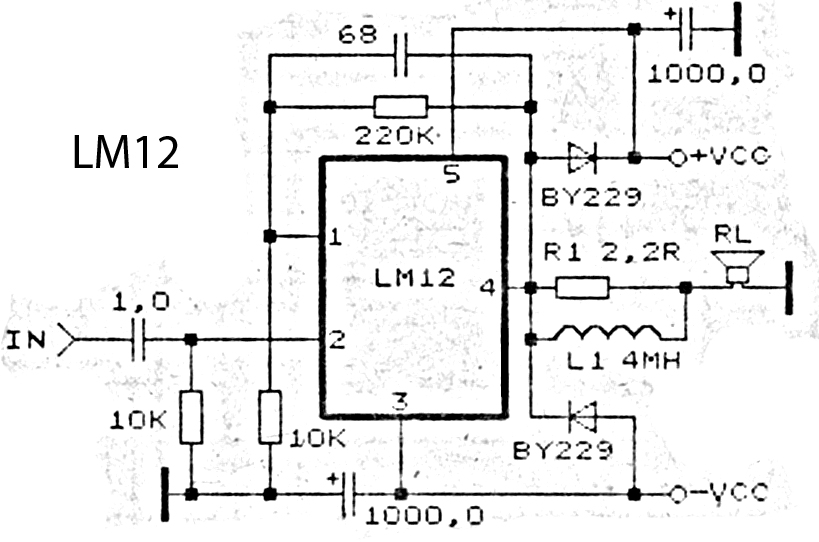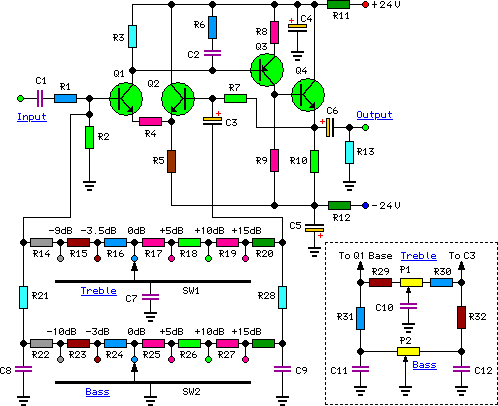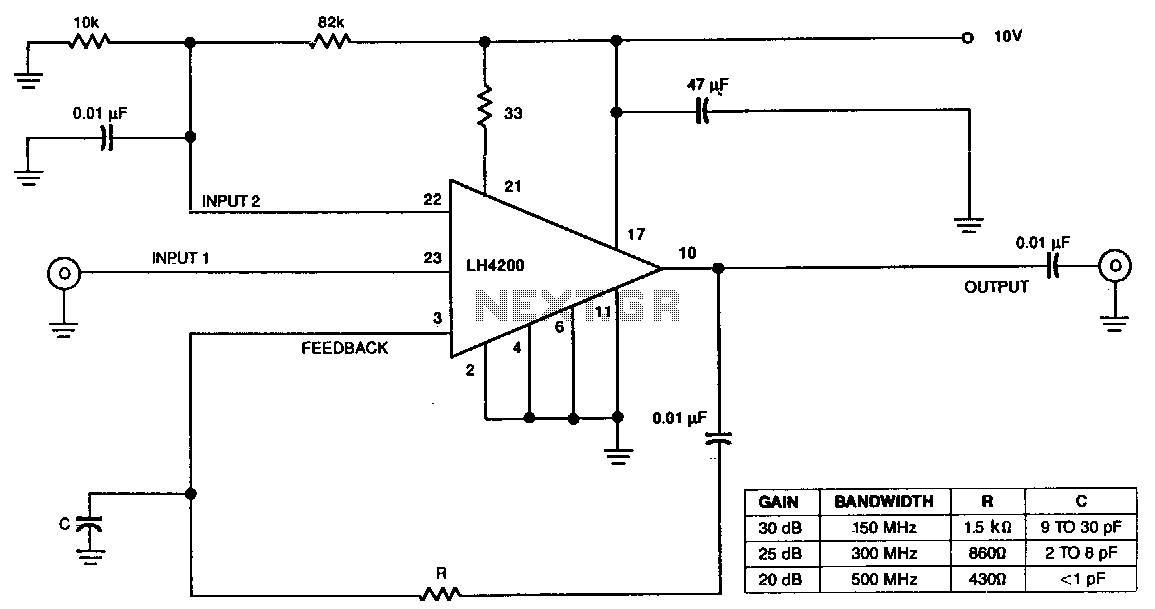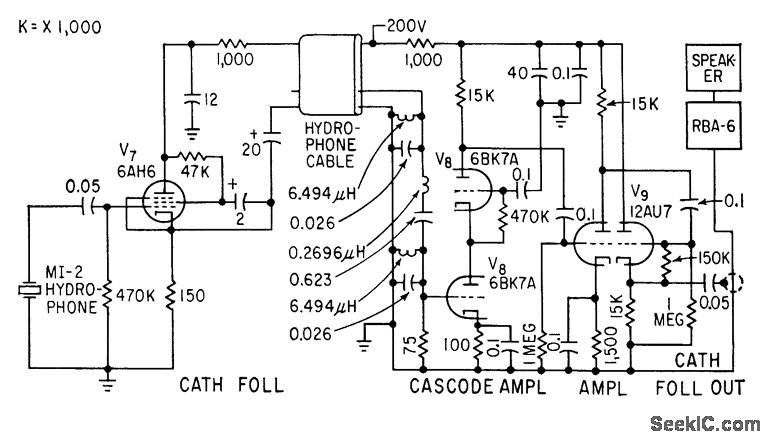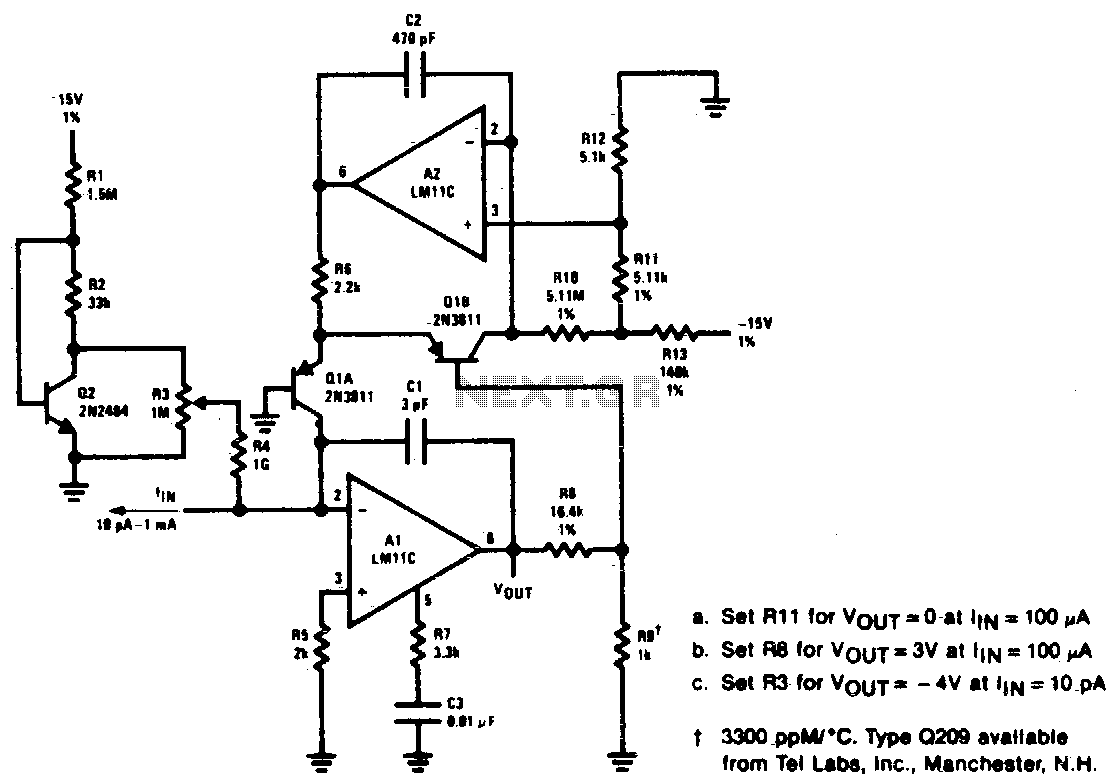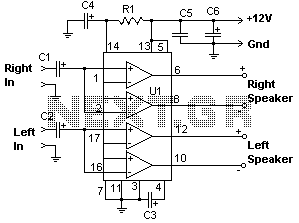
AMPLIFIER WITH FORCED EQUILIBRIUM ADAPTOR
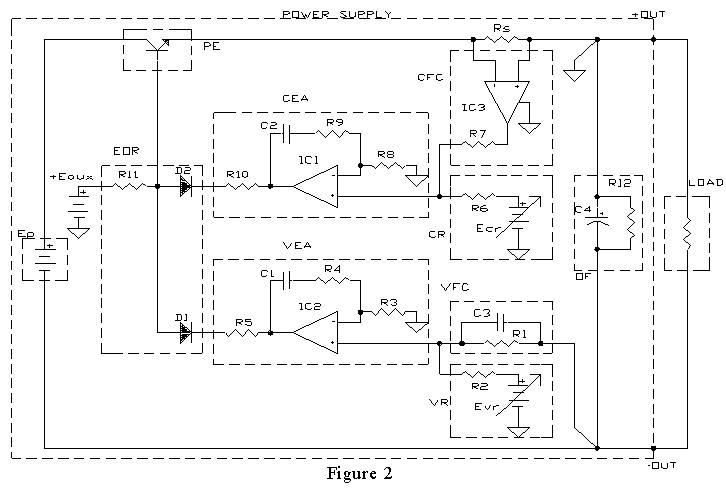
Each power supply, whether linear or switching, operates in at least two modes: constant voltage (CV) and constant current (CC). The power supply can function in either mode, with the other serving as a protective mode for both the load and the power supply itself. For instance, a constant voltage supply will have a protective CC mode, while a constant current supply will have a protective CV mode. The protective or limit mode can be designed to restrict both output current and voltage, such as in a power supply featuring a foldback-type limit, which maintains a quasi-constant power dissipation on the power control element. The transitions between the main operating mode and the protective mode should be automatic and as smooth as possible. However, this is not always achievable due to the performance of the supply's error amplifier. This issue can be addressed by adding a Forced Equilibrium Adapter, which allows the error amplifier to manage these operating mode transitions effectively. To comprehend the functionality of the Forced Equilibrium Adapter, it is essential to first examine the operation of a conventional power supply. Many variable power supplies exhibit a rectangular voltage-current characteristic, which is ideal and applicable only for small variations in output voltage and current, particularly near the "CR" point. In practice, the transfer characteristic and the transitions between CV and CC modes can be represented generically. During these transitions, the amplitude and duration of the transients in output voltage and current depend on various factors. The characteristics during these transitions can be undesirable, as they may subject the load to uncontrolled energy, potentially causing damage. A typical configuration for linear unipolar power supplies reveals why these transitions produce the transients. The output voltage from the controlling error amplifier is a few volts, determined by the configuration of the pass element and the current sensing resistor (Rs), while the output voltage of the uncontrolled error amplifier is close to the +Eaux rail. Each time control switches between these amplifiers, their output voltages must transition between values, which is delayed by several factors. The charge and discharge currents for capacitors depend on the difference between the new programming value and the final output value, leading to "signal" dependent perturbations. Additionally, there is a delay from the time required to charge or discharge the overall voltage feedback capacitor and the output filter capacitor. During these transitions, neither error amplifier is effectively in control, resulting in uncontrolled output voltage and current values. These transients are particularly significant for power supplies with small output capacitors, which produce a short equivalent time constant compared to the other time constants in the supply. Such power supplies may include power amplifiers or standard supplies designed to operate in two modes: "fast mode," with a small output filter capacitor, and "slow mode," with a large output filter capacitor. In "slow mode," output transients are absorbed by the output filter capacitor, provided it is sufficiently large, thereby protecting the load. However, the stress on the power supply remains, as the current through the power element can reach uncontrolled, excessively high values during transients.
The operation of a power supply that incorporates both constant voltage and constant current modes involves a careful balance to ensure reliability and performance. The design must include features that facilitate the smooth transition between these modes, which is critical to prevent damage to both the load and the power supply itself. The implementation of a Forced Equilibrium Adapter is one method to achieve this, allowing for more stable operation during mode transitions.
In practical applications, the characteristics of the output filter capacitors play a significant role in determining the performance of the power supply. A small output capacitor can lead to rapid changes in output voltage and current, resulting in potentially damaging transients. Conversely, a larger output capacitor can mitigate these effects by providing a buffer that absorbs transient energy, thus stabilizing the output during mode transitions.
The design of the error amplifier circuit must also account for the time constants associated with the feedback and output filter capacitors. By optimizing these components, the power supply can achieve better control over its output characteristics, reducing the likelihood of uncontrolled transients. Additionally, the selection of current sensing resistors and the configuration of the pass element are crucial to maintaining the desired operational characteristics while ensuring the protective modes function correctly.
Overall, the integration of these concepts into the design of power supplies enhances their reliability and performance, making them suitable for a wide range of applications where stable power delivery is essential.Each power supply, whether linear or switcher, uses at least two operating modes that characterize its operation: constant voltage (CV) and constant current (CC). The power supply can work in either one, while the other is usually a protective mode, both for the load and for the power supply itself.
For example, a constant voltage supply will have a protective CC mode and a constant current supply will have a protective CV mode. The protective or limit mode can be designed to: Be designed to limit both output current and voltage, e. g. , as in a power supply with a foldback-type limit feature, maintaining a quasi-constant dissipated power on the power control element.
The transitions between these two modes, main operating mode and the protective mode, must be automatic and as smooth as possible. Unfortunately, that is not always the case because of the performance of the supply`s error amplifier.
However, this can be corrected by added a Forced Equilibrium Adapter that enables the error amplifier to cope with these operating mode changes. To understand how the Forced Equilibrium Adapter works, we have to first look at the operation of a conventional power supply.
Many variable power supplies have a rectangular voltage-current characteristic as shown in Figure 1(a). However, the rectangular characteristic is ideal, and can be applied only for small variations of the output voltage and current, especially near the "CR" point.
In reality, the transfer characteristic and the transitions between the two modes, CV and CC, could be represented generically by Figure 1(b). During the transitions between modes, both the amplitude of the transients reached by output voltage and current, along with the duration of the transients, depend on: The characteristics illustrated in Figure 1(b) are undesirable because during these transitions the load receives uncontrolled energy which can possibly damage it.
Figure 2 represents a common configuration used for linear type unipolar power supplies. A quick examination of the schematic reveals why the transitions between the two modes produce the transients depicted in Figure 1(b). The output voltage of the controlling error amplifier has a value of few volts, as determined by the configuration of the pass element and the value of the current sensing resistor (Rs), while the output voltage of the other error amplifier, which is out of control, is very close to the +Eaux rail.
Each time control is switched between them, the output voltage of each error amplifier must swing from one value to the other. These swings are delayed by several factors, Because the charge and discharge currents for these capacitors depend on the difference between the new programming value and the final output value, the perturbations introduced by C1 and C2 are "signal" dependent.
Also, there is a delay introduced by the time required to charge or to discharge the overall voltage feedback capacitor C3 and the output filter capacitor C4. Due to these delays, during the transitions between modes, neither error amplifier is effectively in control, being at equilibrium.
Thus, the output voltage and current take on uncontrolled values during this time. The transients described above are significant for power supplies with a small value output capacitor, that produces a short equivalent time constant, compared with the other time constants in the supply. This kind of power supply could be a power amplifier or a regular power supply designed to work in two modes: "fast mode, " with a small value output filter capacitor and "slow mode, " with a large value output filter capacitor.
When working in "slow mode" output transients are "absorbed" by the output filter capacitor, if it is big enough, which spares the load. However, the stress remains on the power supply, because, during transient, the current through the power element reaches an uncontrolled very high value w
🔗 External reference
The operation of a power supply that incorporates both constant voltage and constant current modes involves a careful balance to ensure reliability and performance. The design must include features that facilitate the smooth transition between these modes, which is critical to prevent damage to both the load and the power supply itself. The implementation of a Forced Equilibrium Adapter is one method to achieve this, allowing for more stable operation during mode transitions.
In practical applications, the characteristics of the output filter capacitors play a significant role in determining the performance of the power supply. A small output capacitor can lead to rapid changes in output voltage and current, resulting in potentially damaging transients. Conversely, a larger output capacitor can mitigate these effects by providing a buffer that absorbs transient energy, thus stabilizing the output during mode transitions.
The design of the error amplifier circuit must also account for the time constants associated with the feedback and output filter capacitors. By optimizing these components, the power supply can achieve better control over its output characteristics, reducing the likelihood of uncontrolled transients. Additionally, the selection of current sensing resistors and the configuration of the pass element are crucial to maintaining the desired operational characteristics while ensuring the protective modes function correctly.
Overall, the integration of these concepts into the design of power supplies enhances their reliability and performance, making them suitable for a wide range of applications where stable power delivery is essential.Each power supply, whether linear or switcher, uses at least two operating modes that characterize its operation: constant voltage (CV) and constant current (CC). The power supply can work in either one, while the other is usually a protective mode, both for the load and for the power supply itself.
For example, a constant voltage supply will have a protective CC mode and a constant current supply will have a protective CV mode. The protective or limit mode can be designed to: Be designed to limit both output current and voltage, e. g. , as in a power supply with a foldback-type limit feature, maintaining a quasi-constant dissipated power on the power control element.
The transitions between these two modes, main operating mode and the protective mode, must be automatic and as smooth as possible. Unfortunately, that is not always the case because of the performance of the supply`s error amplifier.
However, this can be corrected by added a Forced Equilibrium Adapter that enables the error amplifier to cope with these operating mode changes. To understand how the Forced Equilibrium Adapter works, we have to first look at the operation of a conventional power supply.
Many variable power supplies have a rectangular voltage-current characteristic as shown in Figure 1(a). However, the rectangular characteristic is ideal, and can be applied only for small variations of the output voltage and current, especially near the "CR" point.
In reality, the transfer characteristic and the transitions between the two modes, CV and CC, could be represented generically by Figure 1(b). During the transitions between modes, both the amplitude of the transients reached by output voltage and current, along with the duration of the transients, depend on: The characteristics illustrated in Figure 1(b) are undesirable because during these transitions the load receives uncontrolled energy which can possibly damage it.
Figure 2 represents a common configuration used for linear type unipolar power supplies. A quick examination of the schematic reveals why the transitions between the two modes produce the transients depicted in Figure 1(b). The output voltage of the controlling error amplifier has a value of few volts, as determined by the configuration of the pass element and the value of the current sensing resistor (Rs), while the output voltage of the other error amplifier, which is out of control, is very close to the +Eaux rail.
Each time control is switched between them, the output voltage of each error amplifier must swing from one value to the other. These swings are delayed by several factors, Because the charge and discharge currents for these capacitors depend on the difference between the new programming value and the final output value, the perturbations introduced by C1 and C2 are "signal" dependent.
Also, there is a delay introduced by the time required to charge or to discharge the overall voltage feedback capacitor C3 and the output filter capacitor C4. Due to these delays, during the transitions between modes, neither error amplifier is effectively in control, being at equilibrium.
Thus, the output voltage and current take on uncontrolled values during this time. The transients described above are significant for power supplies with a small value output capacitor, that produces a short equivalent time constant, compared with the other time constants in the supply. This kind of power supply could be a power amplifier or a regular power supply designed to work in two modes: "fast mode, " with a small value output filter capacitor and "slow mode, " with a large value output filter capacitor.
When working in "slow mode" output transients are "absorbed" by the output filter capacitor, if it is big enough, which spares the load. However, the stress remains on the power supply, because, during transient, the current through the power element reaches an uncontrolled very high value w
🔗 External reference
